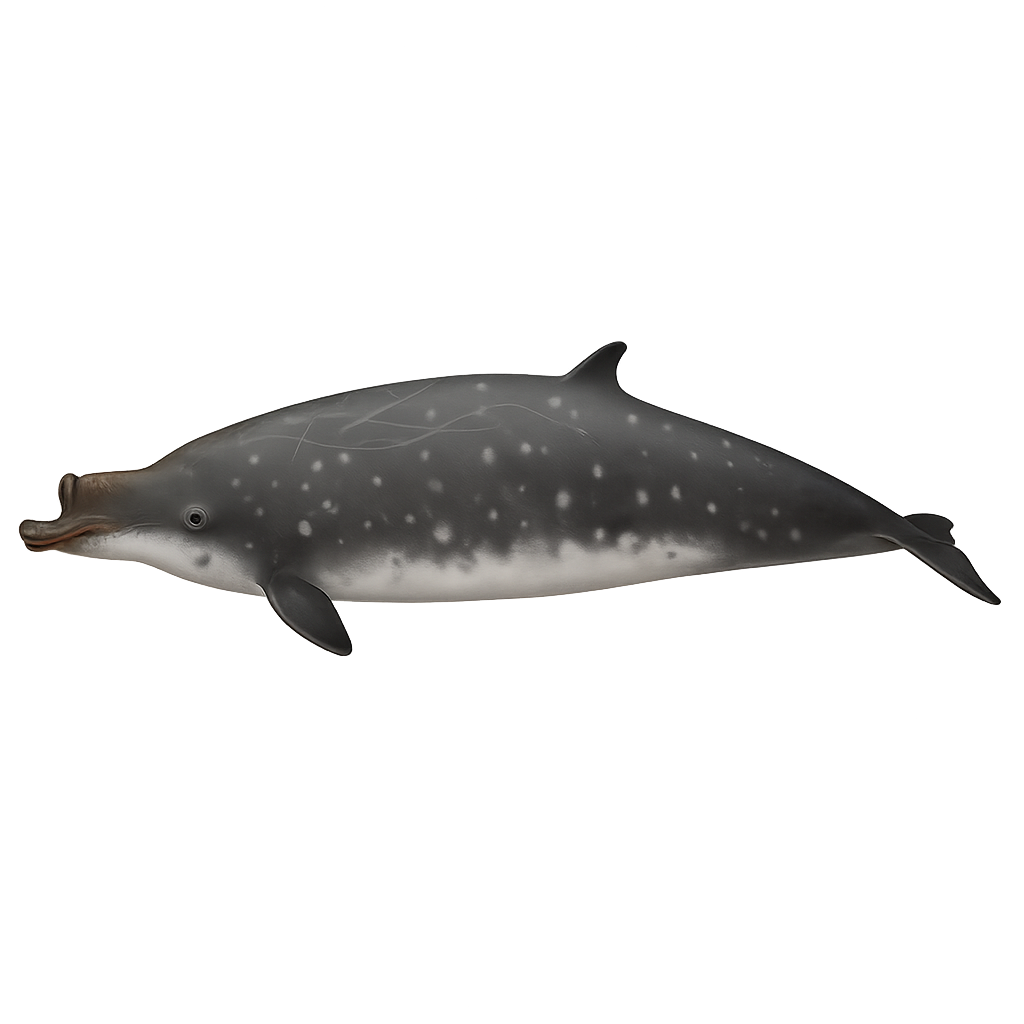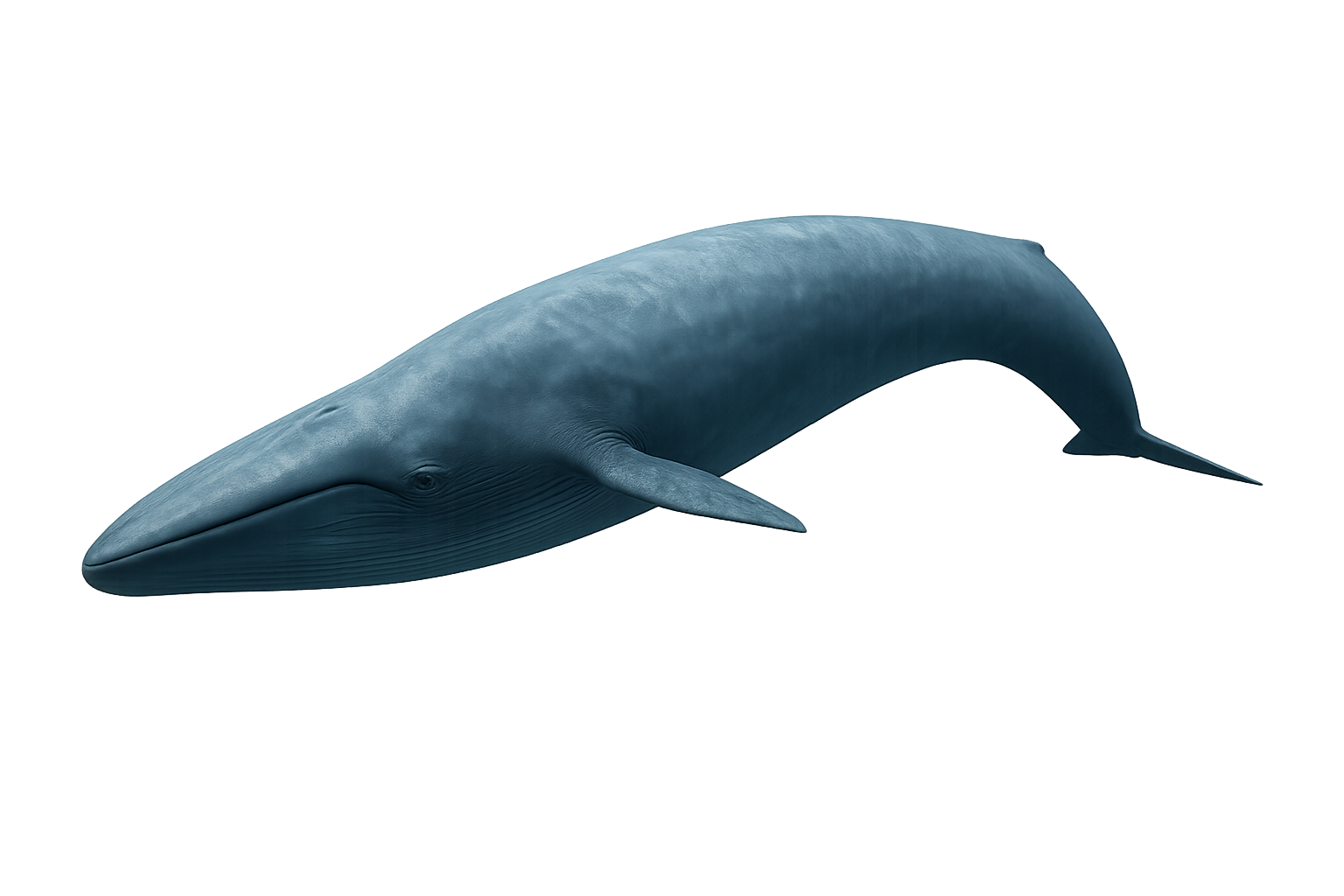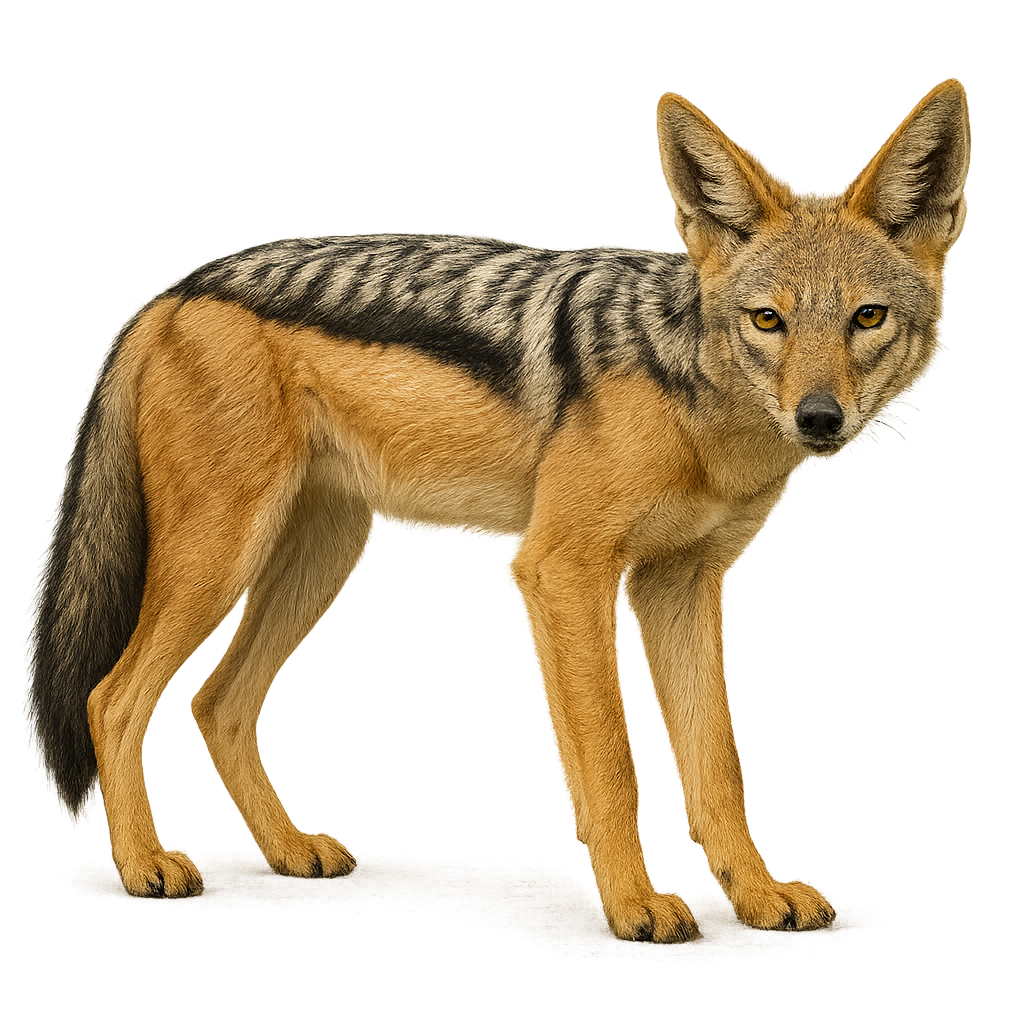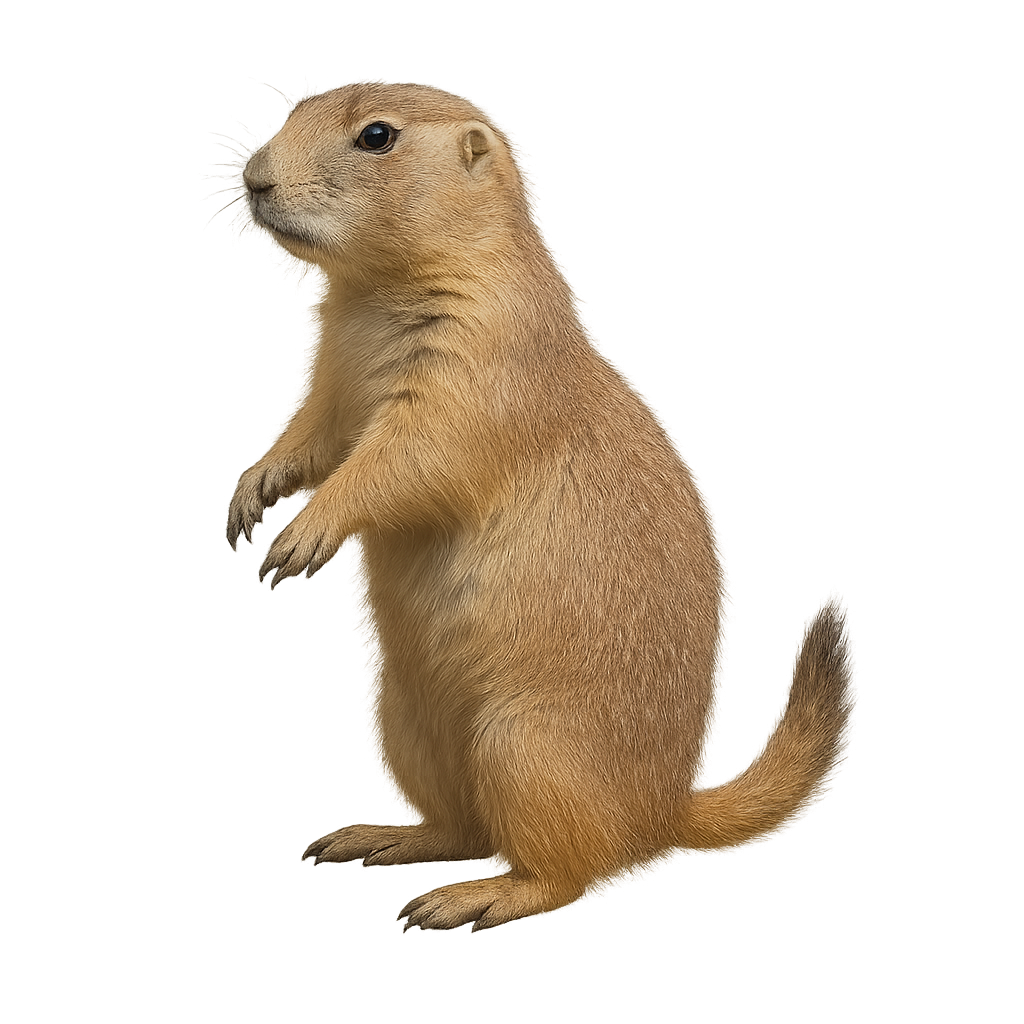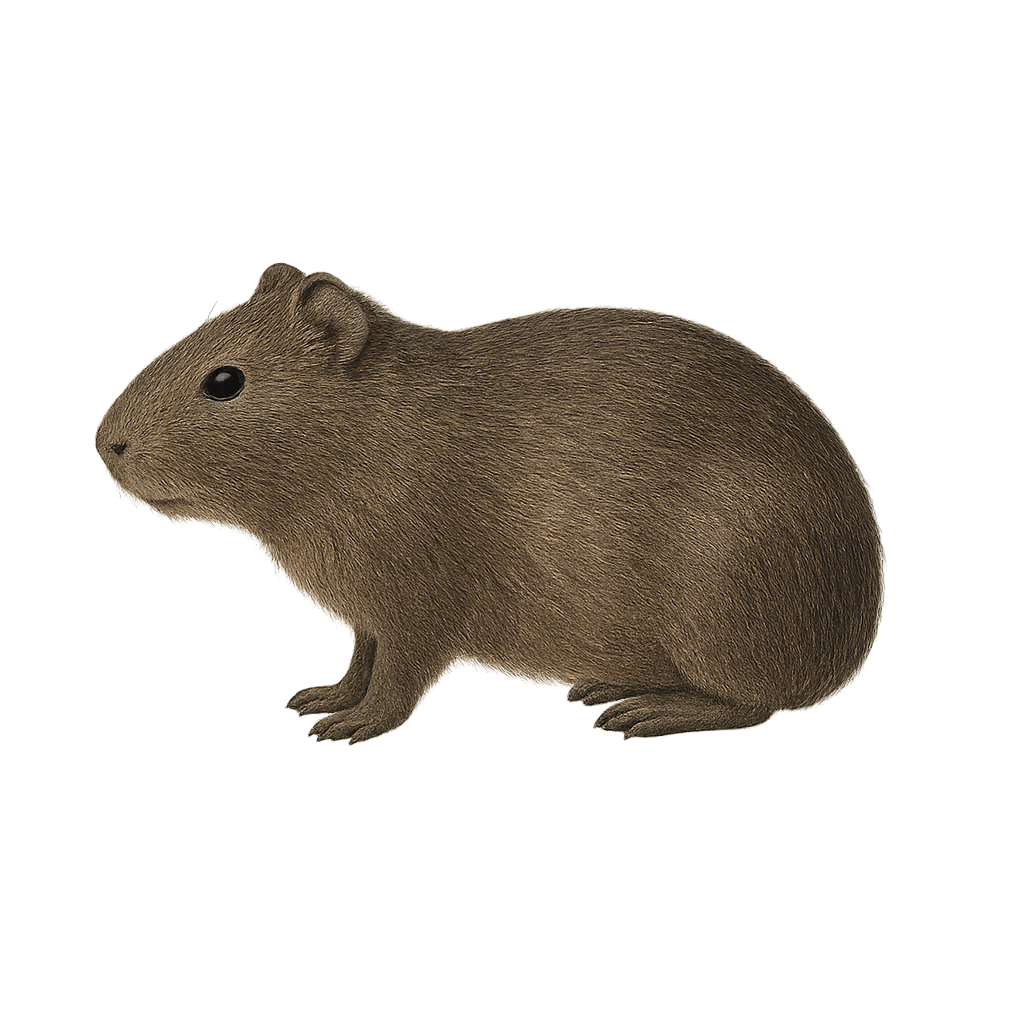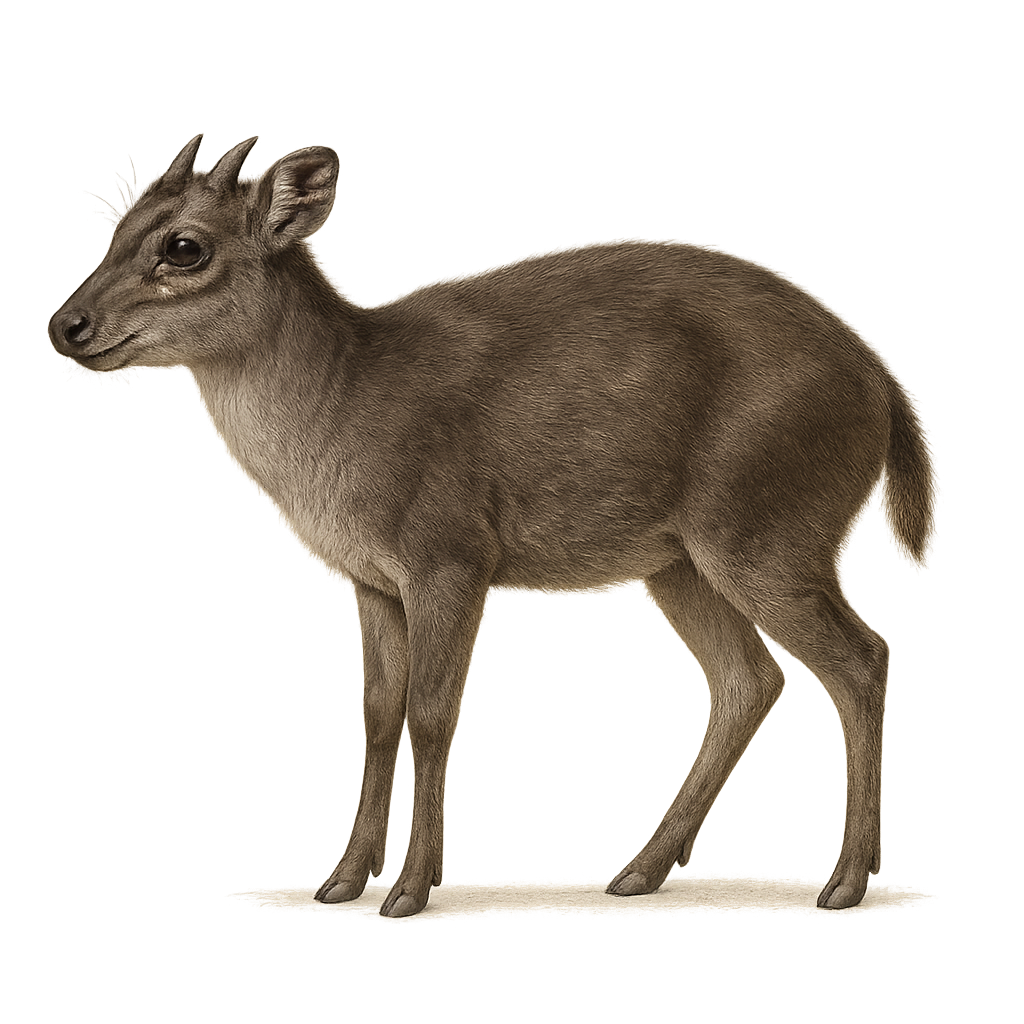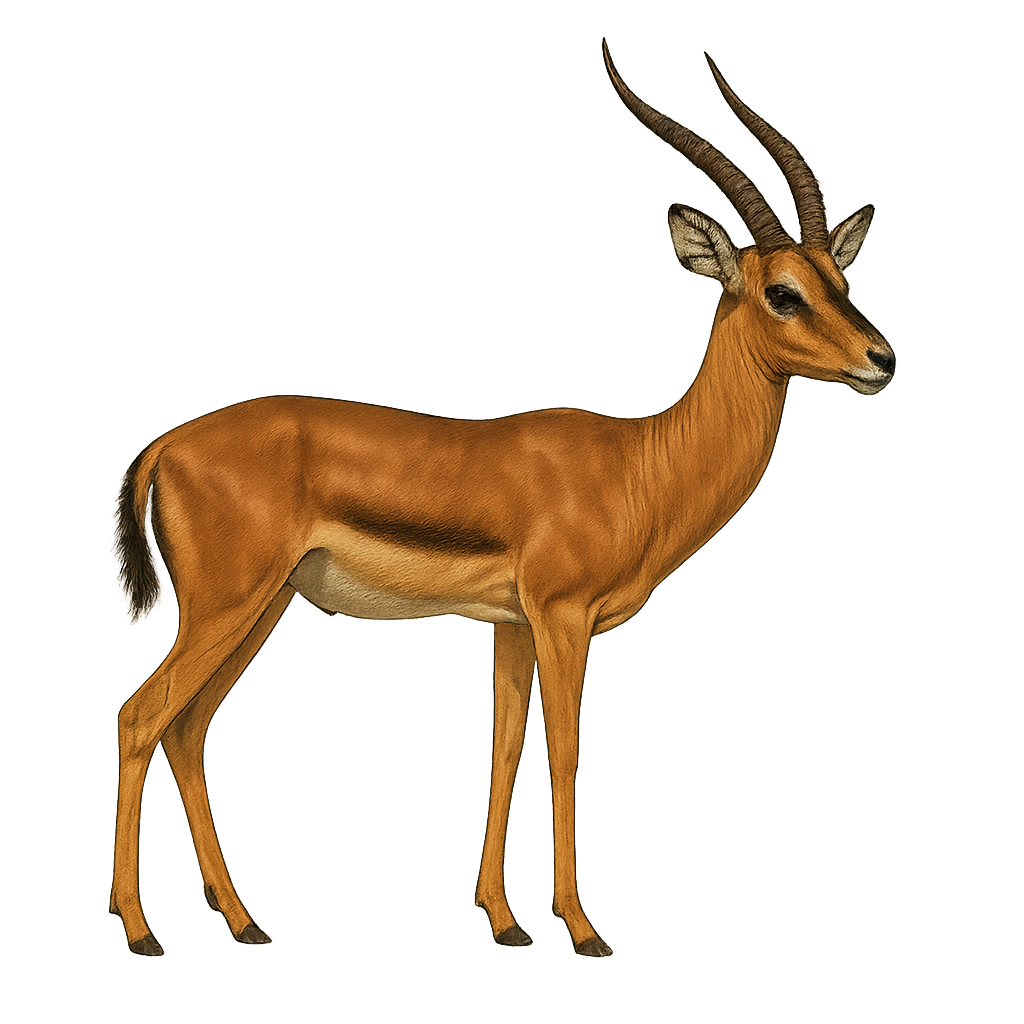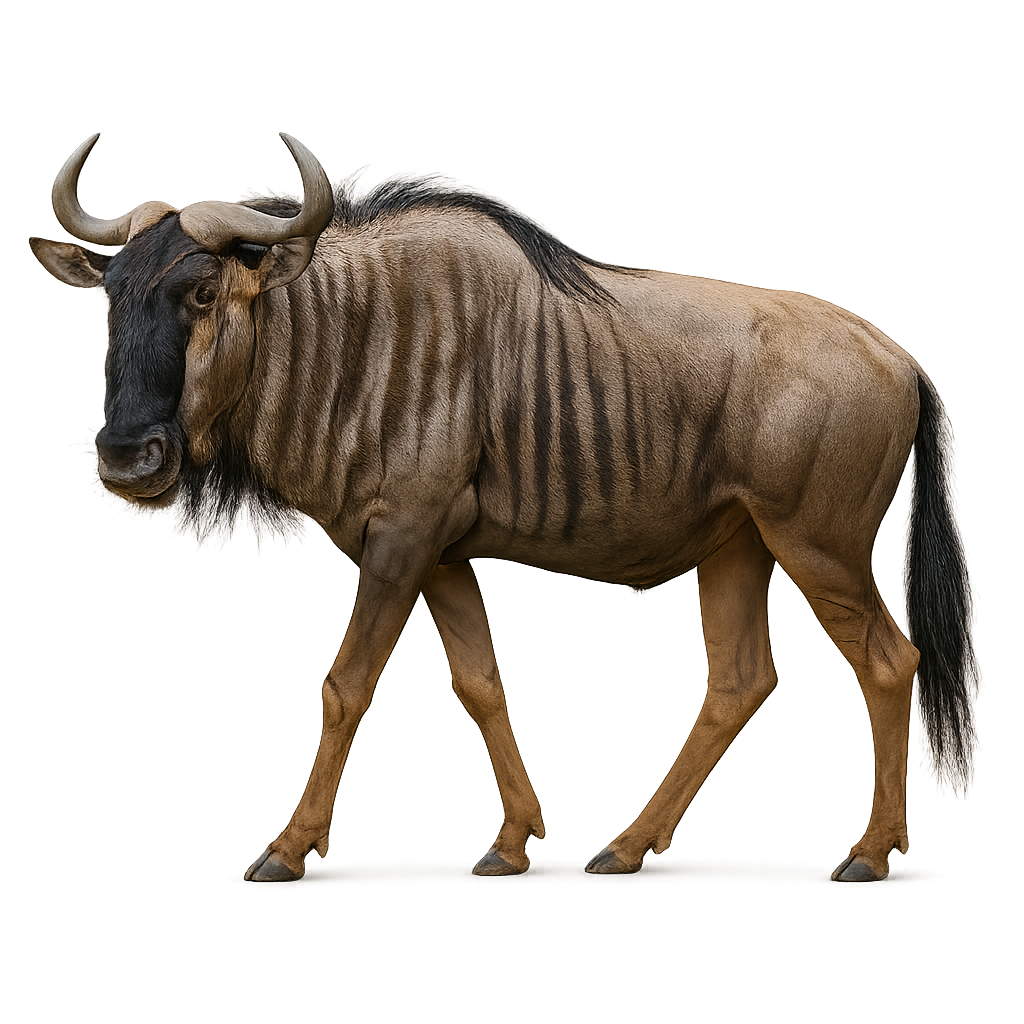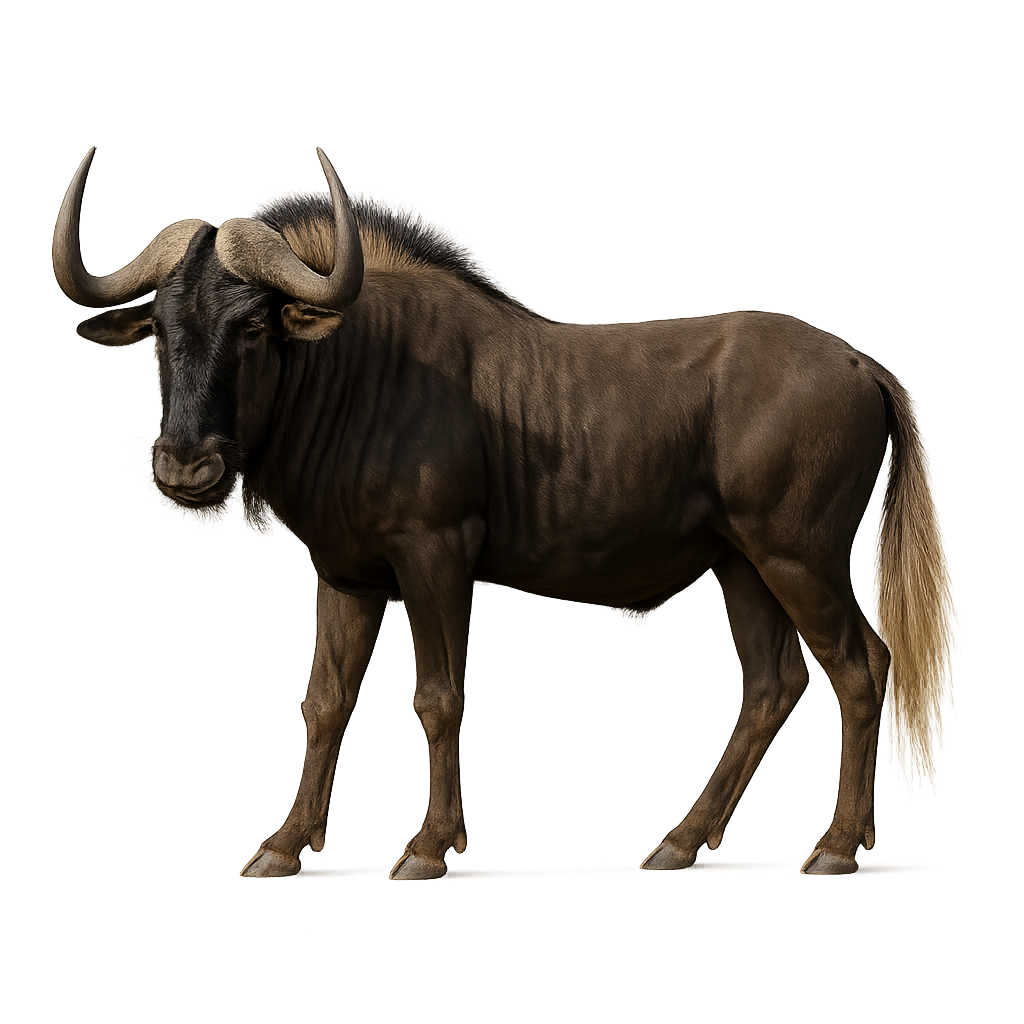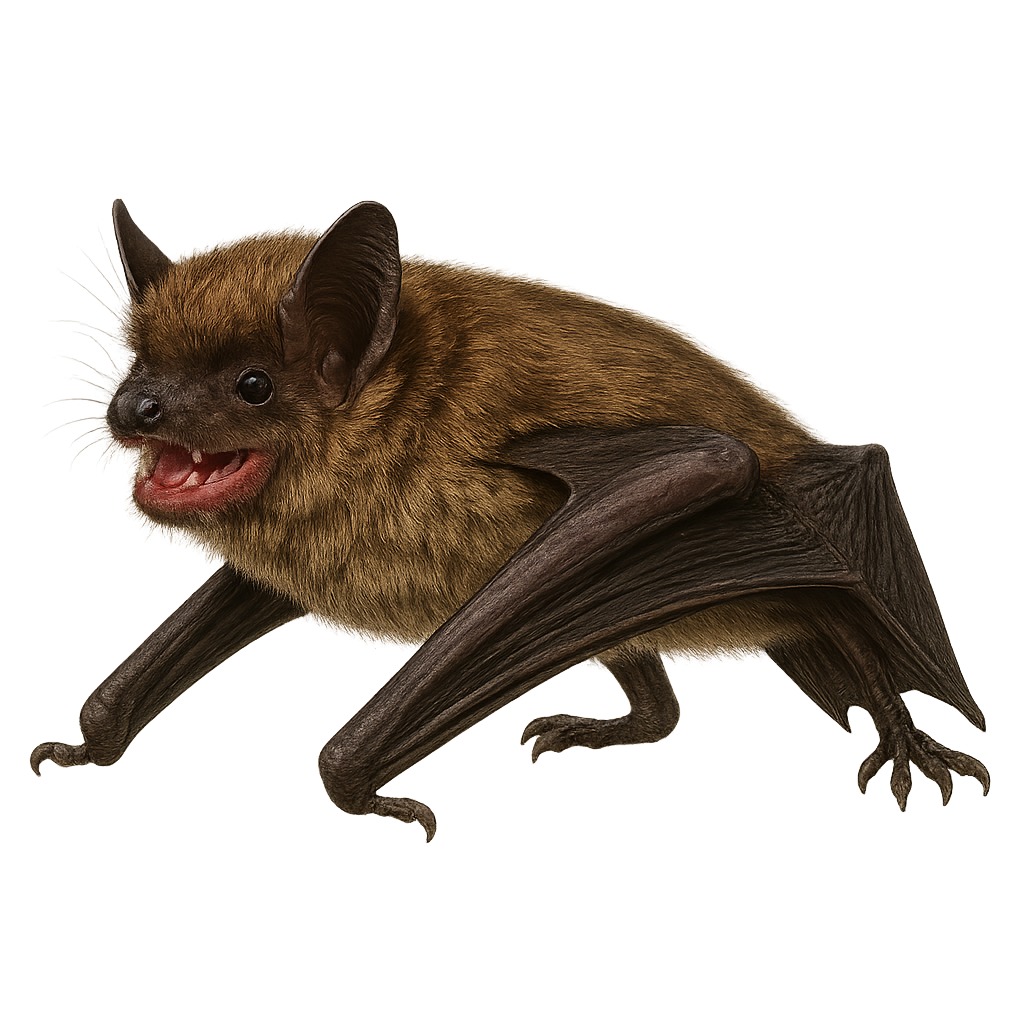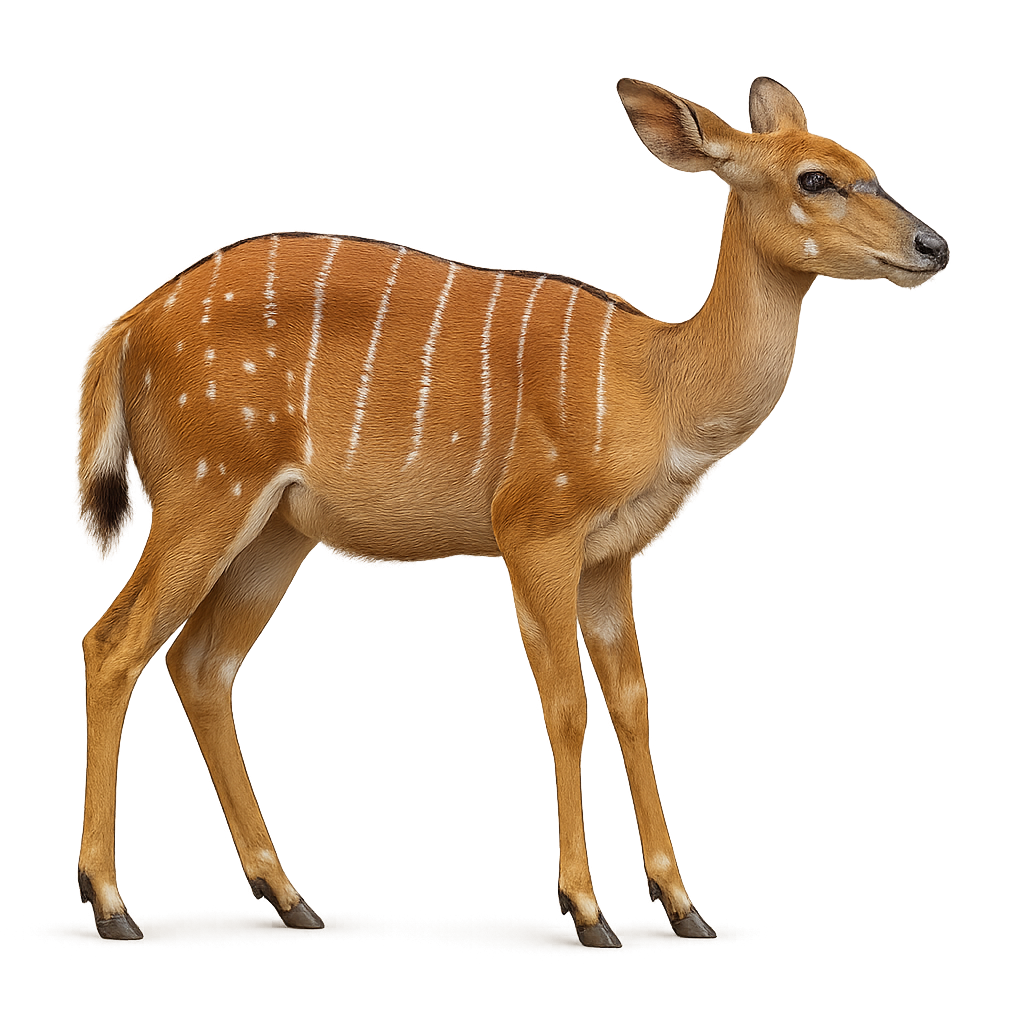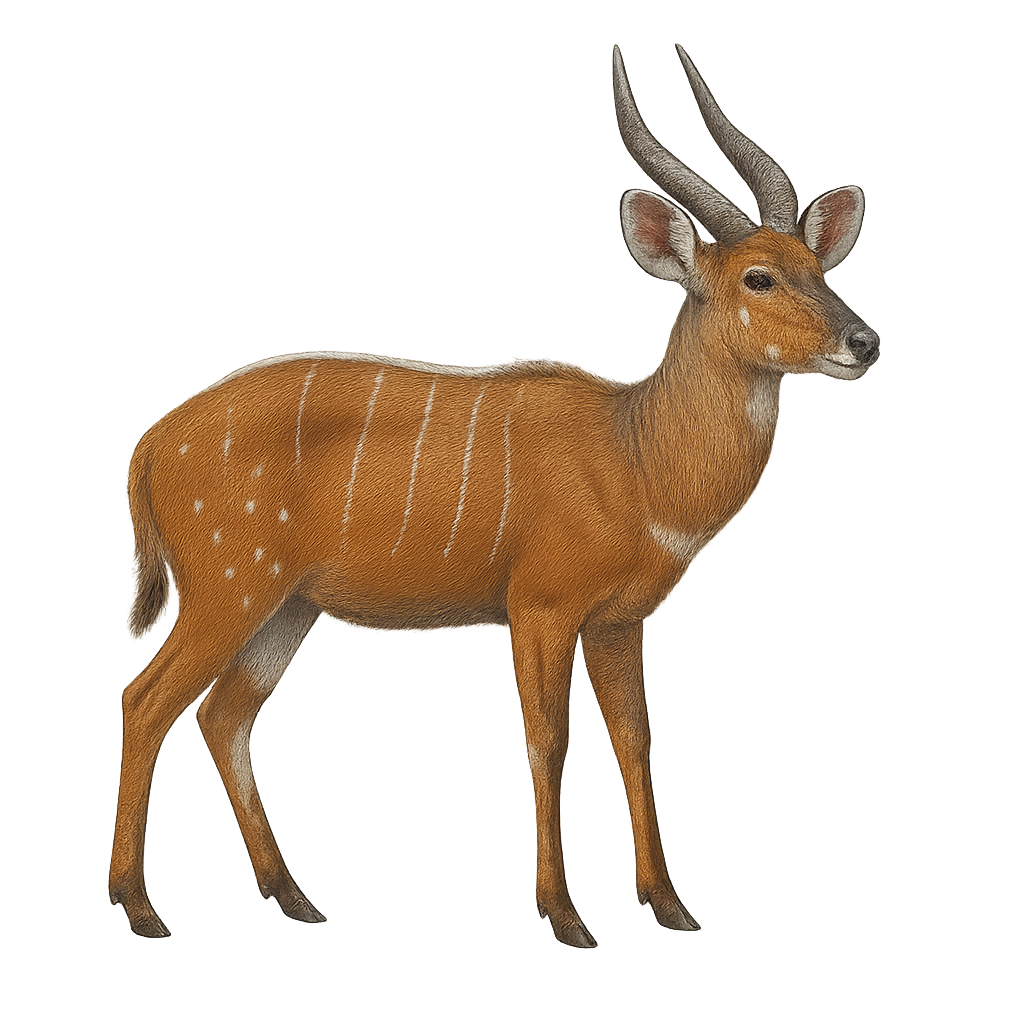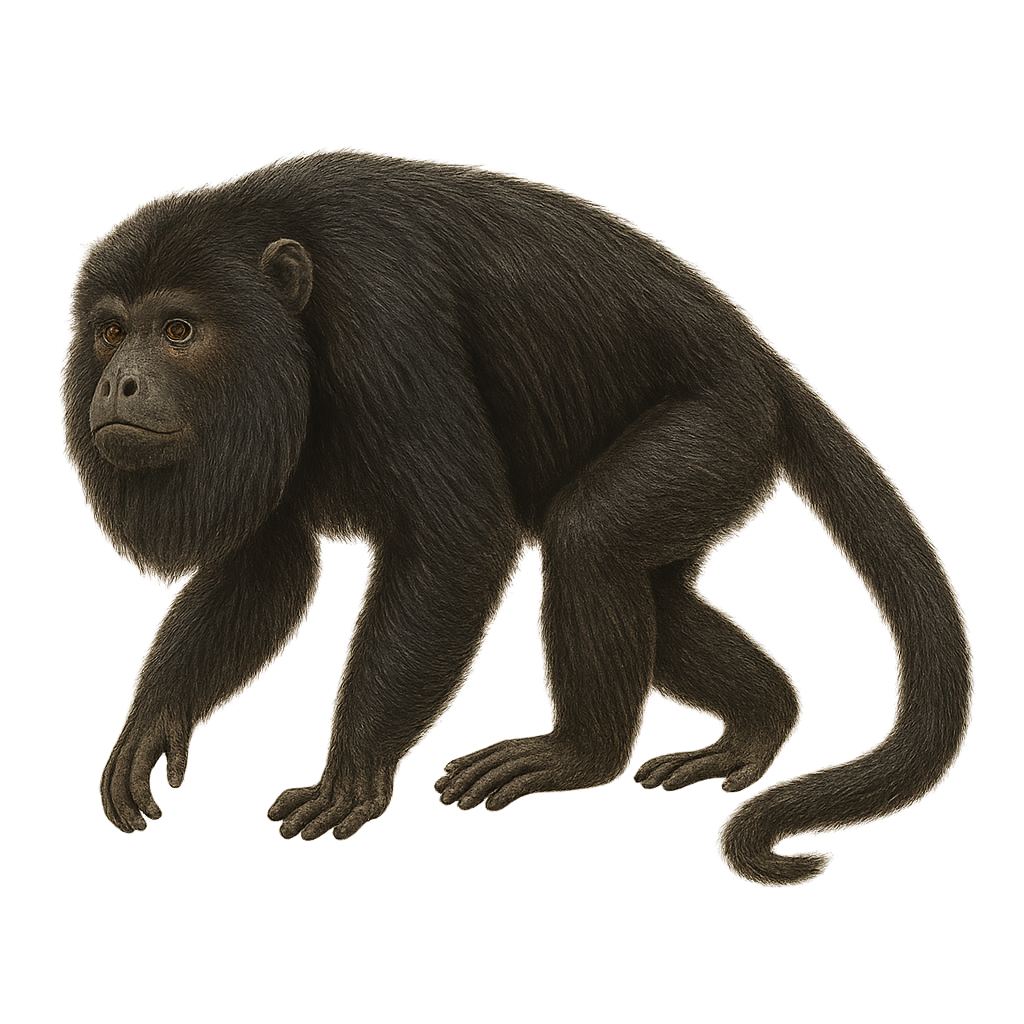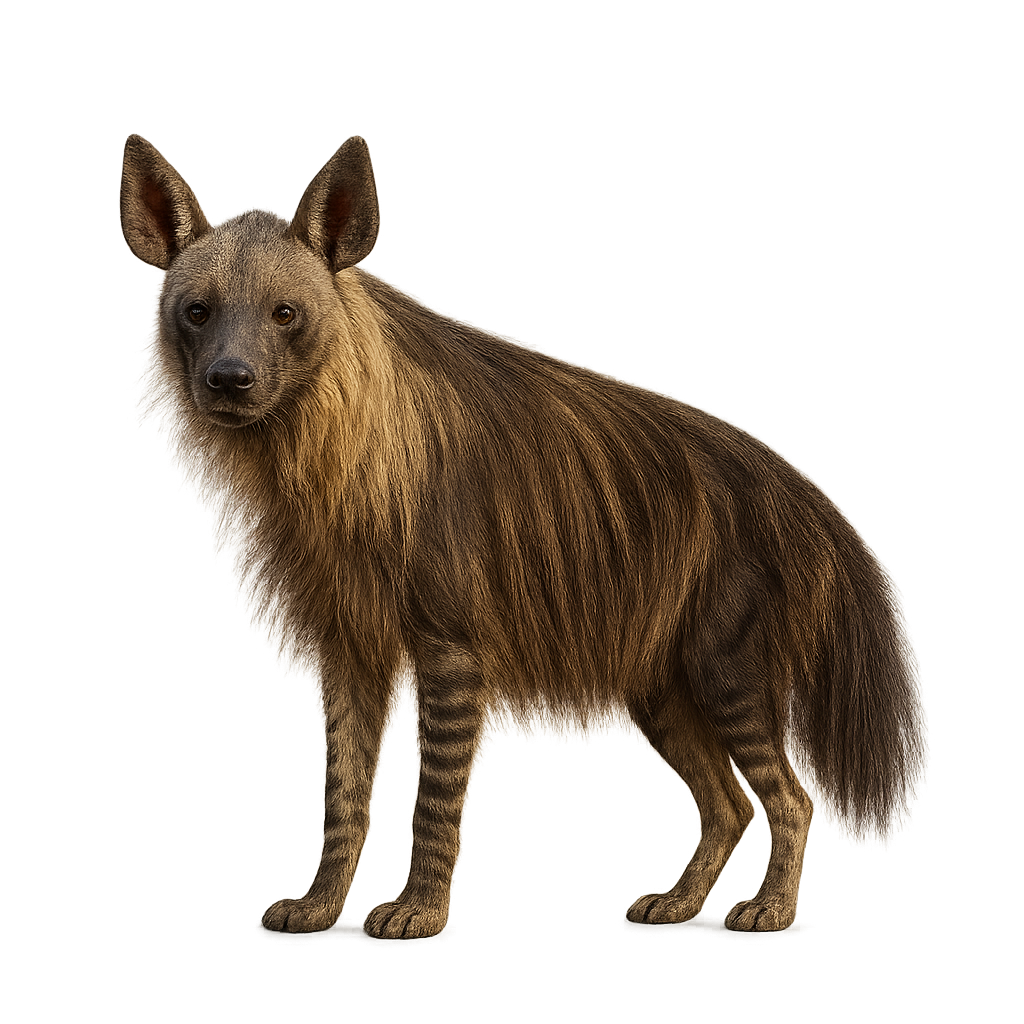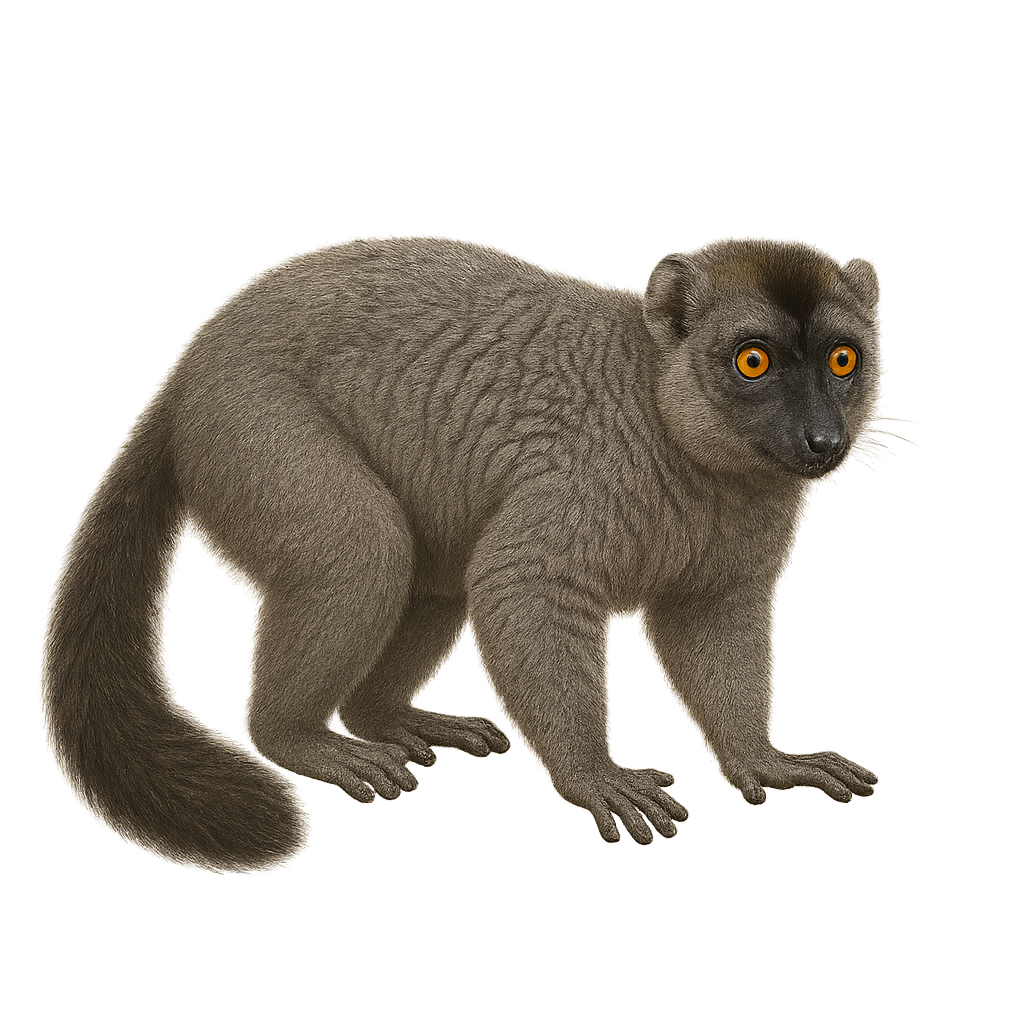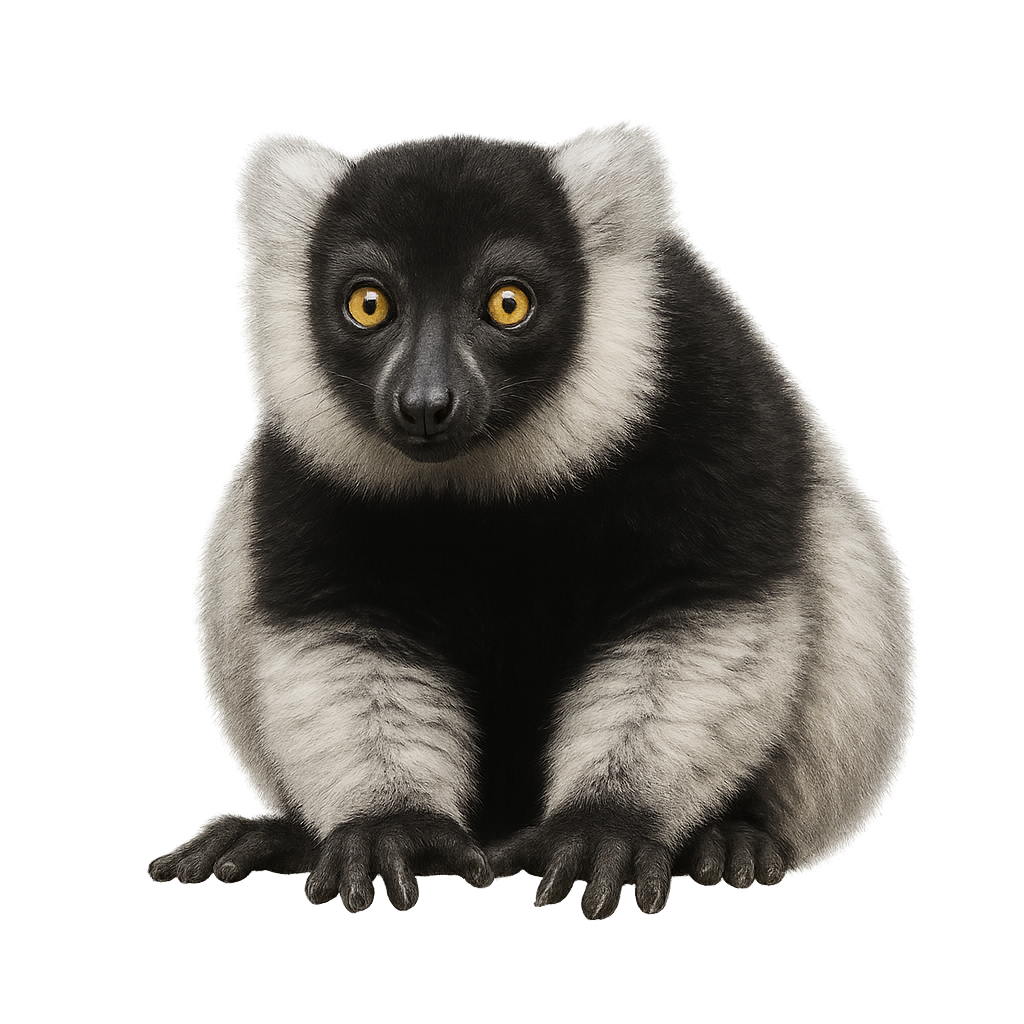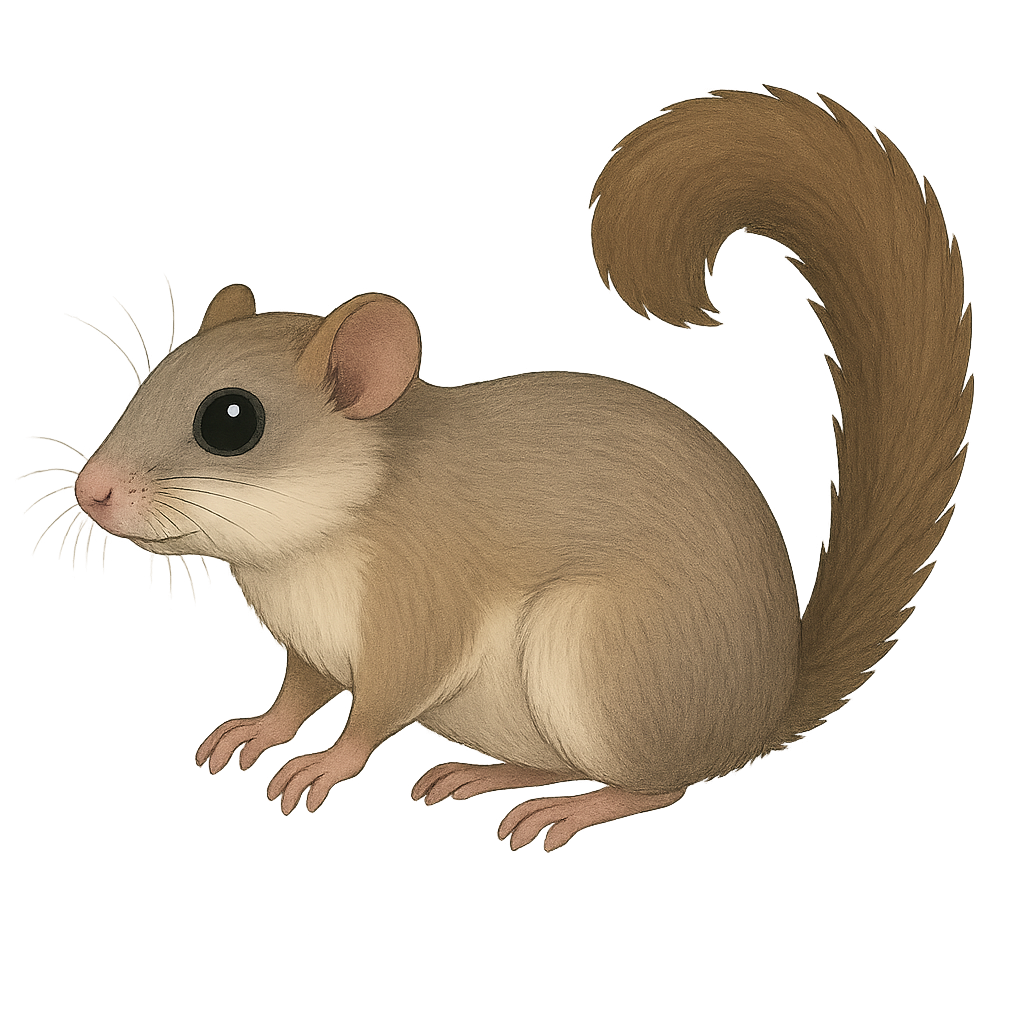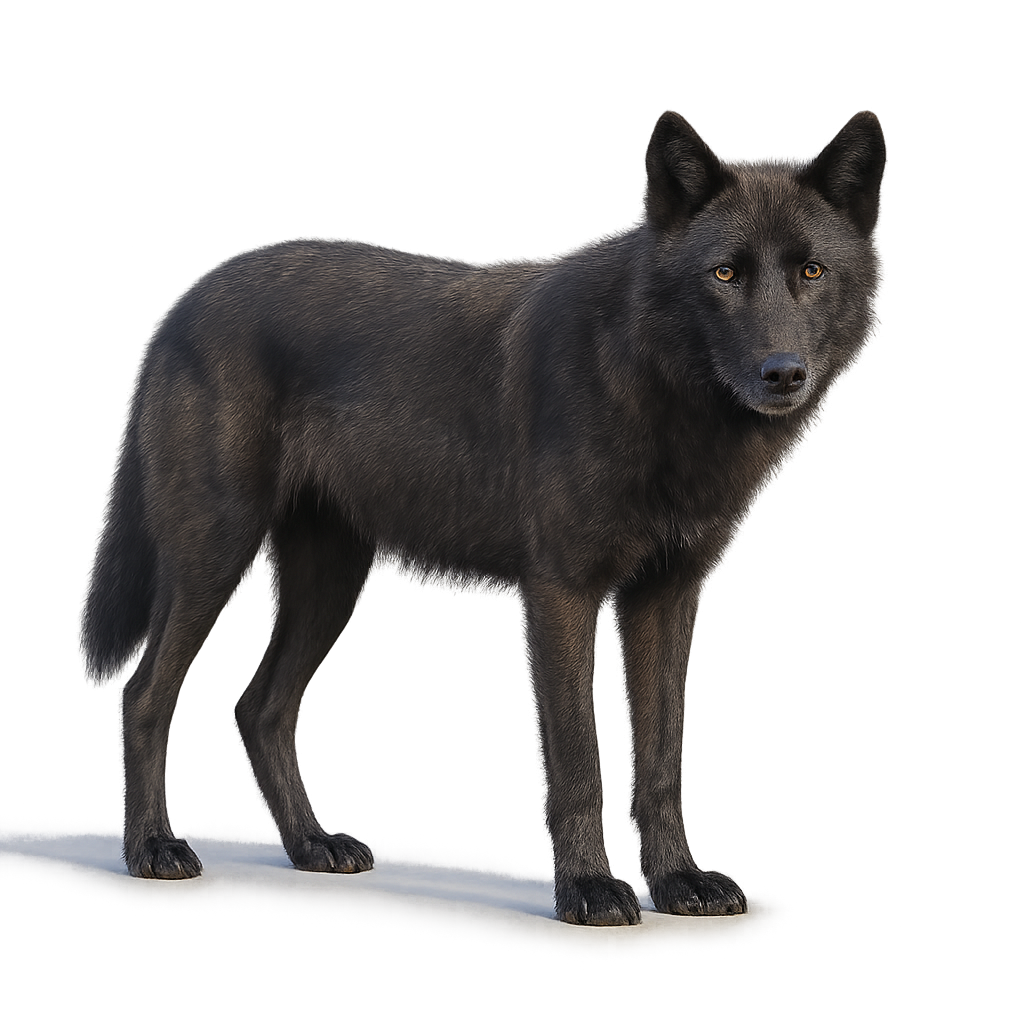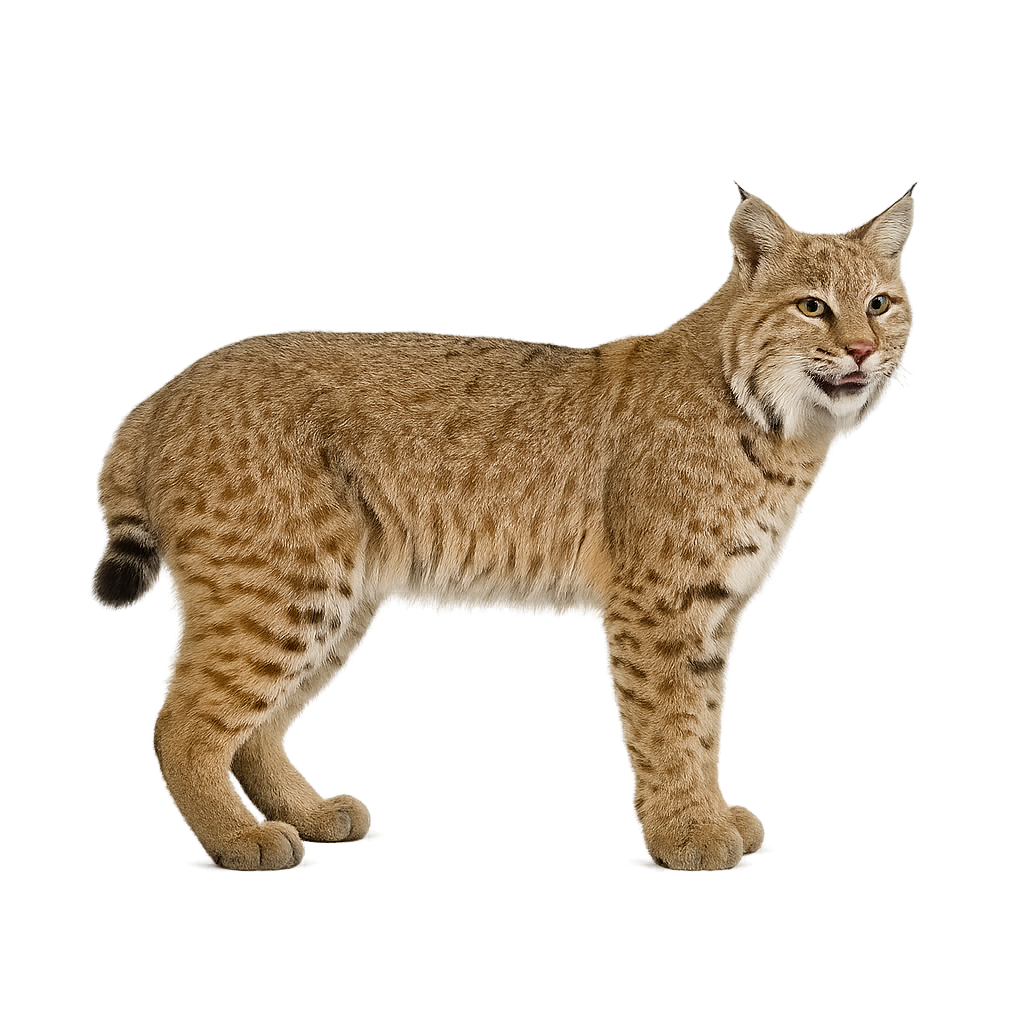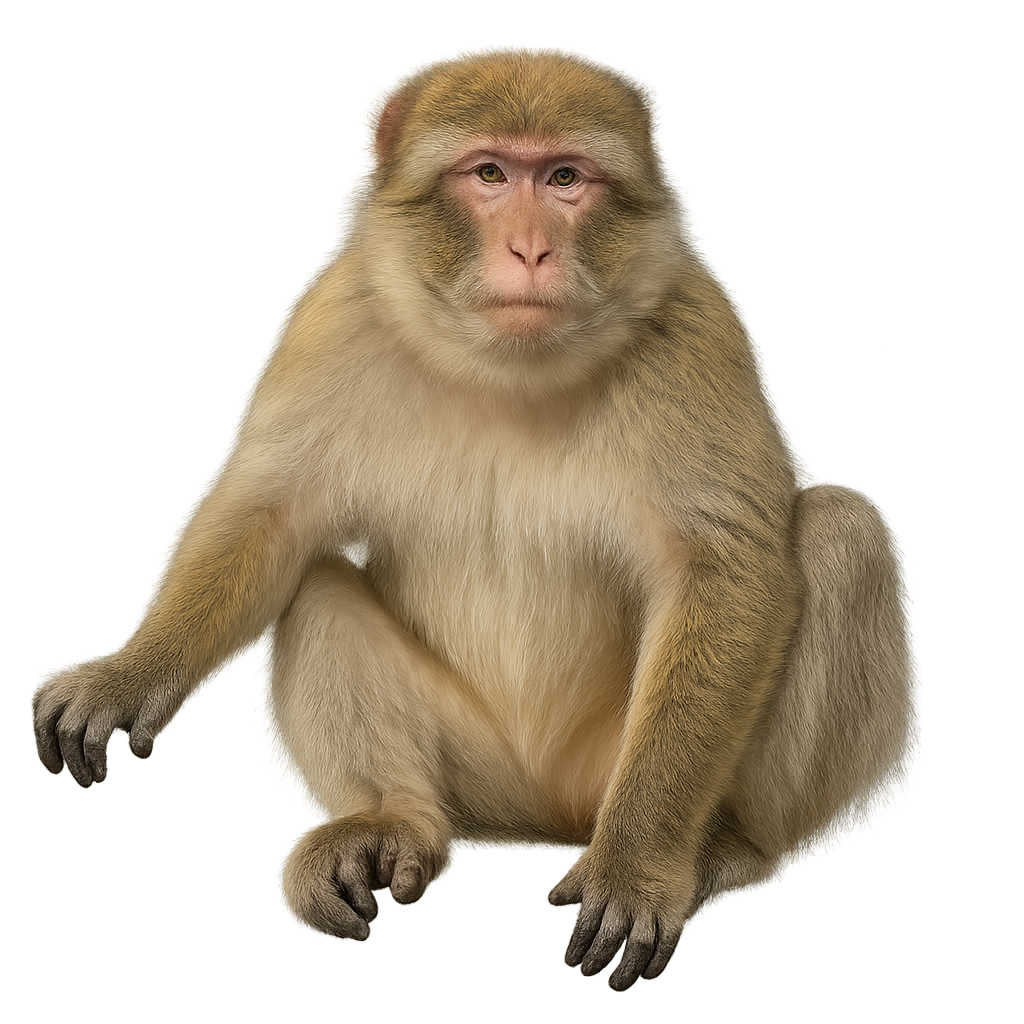Blainville's beaked whale is a little-known species of beaked whale, primarily inhabiting the deep waters of the Atlantic and Pacific Oceans. It is easily recognized by its long, narrow rostrum. This species is difficult to observe due to its deep-ocean habitat and migratory habits. The Blainville's beaked whale is still poorly studied but is threatened by pollution, ship collisions, and underwater noise.
The Blue Whale is the largest animal ever known to have existed on Earth. This impressive cetacean can grow up to 30 meters long and weigh as much as 180 tons. Its gray-blue skin and streamlined body are perfectly adapted to ocean life, and despite its enormous size, the Blue Whale primarily feeds on small marine organisms such as krill, which it consumes in large quantities. Using its massive tongue and enormous mouth, it can swallow up to 4 tons of krill in a single gulp.
Unfortunately, although once abundant, the Blue Whale is now classified as an endangered species due to commercial whaling, which has significantly reduced its population. Conservation efforts are now in place to protect this majestic creature.
The Beluga is a remarkable cetacean, easily recognizable by its immaculate white color and streamlined shape. Unlike many other dolphins, the Beluga has a rounded forehead, called a "melon," which allows it great head flexibility. What also makes the Beluga unique is its ability to produce a wide variety of sounds, which it uses to communicate and navigate in the cold waters of the Arctic seas, the North Atlantic, and rivers. It primarily feeds on fish, crustaceans, and mollusks, hunting them with its excellent echolocation ability.
Belugas live in social groups called "pods" and are known for their social behavior and interaction with humans. Despite its popularity, the Beluga is vulnerable to water pollution and climate change, which affect its natural habitats.
The binturong is an arboreal mammal with a stocky body and long prehensile tail. Its shaggy black fur and unique scent reminiscent of popcorn make it easily identifiable. Active at night, it moves slowly through the canopy of Southeast Asian rainforests in search of fruits, small animals, and eggs. Solitary and elusive, it is increasingly rare due to habitat loss.
Bongo
Cephalophus eurycerus
The Bongo is a large forest antelope native to Central Africa, recognized for its beautiful white stripes and bright orange coat. It primarily lives in dense forests, where it feeds on leaves, fruits, and bark. This antelope is usually solitary or lives in small family groups. Due to habitat loss and hunting, the Bongo is classified as a vulnerable species. Its discretion and ability to blend into its environment make it a difficult animal to spot.
The black-fronted duiker is a species of duiker, a small antelope found in the dense forests of West and Central Africa. It is easily recognizable by its distinctive black flanks and small size. This species is primarily herbivorous, feeding on fruits, leaves, and young shoots. While generally discreet and difficult to observe, it is threatened by deforestation and hunting. Its population is declining.
The black duiker, or Cephalophus niger, is a small African antelope primarily found in the dense forests of West Africa. It is characterized by its dark, nearly black coat and compact size, measuring about 50 cm at the shoulder and weighing between 15 to 20 kg. Both sexes have short, slightly curved horns. Adapted to life in the undergrowth, it feeds mainly on fruits, leaves, and young shoots. Its discreet behavior and ability to slip through dense vegetation make it difficult to spot. It is often solitary, although pairs can sometimes be seen.
The Black-backed Jackal, also known as the silver-backed jackal, is a small canid native to Africa, particularly found in savannas and open grasslands. It is distinguished by its grayish coat with a black stripe running along its back, hence the name "black-backed". This coat helps it blend effectively into its environment. The Black-backed Jackal has a slender body and relatively long legs, allowing it to run at high speeds.
An opportunistic carnivore, it primarily feeds on small mammals, birds, insects, and carrion, but it can also eat fruits and plants. Although it is a solitary animal, the Black-backed Jackal can occasionally be seen in small groups, especially during the breeding season. While its status is not particularly threatened, it faces competition from other predators and the loss of its natural habitat.
The black-backed jackal, or Canis mesomelas, is a medium-sized canid easily recognized by its distinctive coat. It features a black back contrasting with the rest of its body, which is usually tawny or grayish. This opportunistic predator is primarily nocturnal, although it can be active at dusk. It inhabits various environments, from savannas to semi-desert areas. The black-backed jackal is a social animal, often seen in pairs or small family groups. Its communication relies on a variety of vocalizations, including howls and barks. Although wary of humans, it adapts well to human-modified environments.
The black-footed cat, Felis nigripes, is one of Africa's smallest felines, measuring about 36 to 52 cm in length with a tail of 13 to 20 cm. It weighs between 1 and 2.5 kg. Its coat is spotted with black on a tawny background, allowing it to blend effectively into the dry grasses of its natural habitat. This feline is primarily nocturnal and solitary, hunting small rodents and birds. It is known for its tenacity and aggressiveness, capable of taking on prey larger than itself. Although rarely seen, it plays a crucial role in the ecosystem by regulating small animal populations.
The black-tailed prairie dog is a small social ground squirrel about 30 cm long with sandy-brown fur and a black-tipped tail, living in dense burrow colonies on North American grasslands. It feeds on grasses, roots and seeds. During the breeding season, males actively defend territories with alarm calls and erect postures.
The Cavia aperea, commonly known as the Brazilian Guinea Pig, is a small rodent native to South America. Often mistaken for the domestic guinea pig, it is a distinct species. This modest-sized rodent has a stocky body, short ears, and a brownish coat that helps it blend into its natural surroundings. It primarily inhabits grasslands, savannas, and open forests, where it feeds on a variety of vegetation. The Brazilian Guinea Pig is a social animal that lives in groups and communicates through a series of vocalizations. Although mainly diurnal, it can also be active at dusk. Its ability to adapt to various habitats makes it a resilient species.
The White-fronted Damalisque is a medium-sized antelope, recognizable by its reddish-brown coat and the distinctive white band that crosses its forehead, which gives it its name. It stands between 1.30 and 1.50 meters tall at the withers and weighs between 50 and 70 kg. This mammal primarily inhabits open savannas, grasslands, and semi-desert areas, preferring open terrain where it can graze on grasses, leaves, and stems. It is well adapted to heat and drought, thanks to its short coat and behavior of seeking shade during the hottest parts of the day. The White-fronted Damalisque lives in small groups, often consisting of females and young, while adult males usually live alone or in small groups. It is mainly active in the morning and late afternoon, when it is easier to feed while avoiding the heat of the day. While the species is currently in good health, it faces threats such as illegal hunting, habitat loss due to human expansion, and competition with livestock for food resources.
The Cephalophus monticola, commonly known as the blue duiker, is a small mammal from the Bovidae family. It is one of the smallest antelopes, standing about 30 to 40 cm tall at the shoulder and weighing between 3 and 6 kg. Its coat is typically reddish-brown with shades of gray, allowing it to blend effectively into its natural habitat. It is primarily nocturnal and crepuscular, feeding on leaves, fruits, and flowers. The blue duiker is solitary or lives in small family groups. It is very shy and uses its agility to escape predators. It is mainly found in dense forests and wooded areas of Central and East Africa.
The Bright's Gazelle is an elegant, medium-sized antelope, recognizable for its slender proportions and long, thin legs. It stands about 75 cm at the withers and weighs between 30 and 40 kg. Its coat is generally light beige, with darker markings on the flanks and a distinctive black stripe running along its lateral line. Adult males have fine, curved horns, while females generally lack them. The Bright's Gazelle primarily inhabits the savannas and steppes of East Africa, particularly in Ethiopia and Kenya. It is herbivorous, feeding mainly on grasses, leaves, and plants. Like all gazelles, it is fast and agile, capable of running at speeds of up to 80 km/h to escape predators. Although the Bright's Gazelle is not currently endangered, it faces threats related to habitat loss, hunting, and competition with livestock for food resources.
The Blue Wildebeest is a large herbivorous antelope, easily recognizable by its massive body, imposing head, and black mane. It stands about 1.3 to 1.5 meters at the withers and typically weighs between 150 and 250 kg. Its coat is generally grayish-blue, with black markings on the head, legs, and shoulders. The Blue Wildebeest has curved horns that can reach 80 cm in length. It primarily inhabits the savannas, grasslands, and woodlands of Southern Africa, notably in South Africa, Botswana, and Namibia. Herbivorous, the Blue Wildebeest mainly feeds on grasses and low vegetation, often seen in large herds in open plains. It is commonly seen during large migrations, moving in search of food and water. While the species is not currently endangered, it faces risks related to habitat loss and hunting.
The Black Wildebeest is a large herbivorous antelope, easily recognizable by its robust build and massive head. It stands about 1.3 to 1.5 meters at the withers and weighs between 150 and 250 kg, with males generally being larger and heavier than females. Its coat is a deep black, with white markings on the throat and legs, and a black mane that distinguishes its neck. The Black Wildebeest is particularly known for its curved horns, which can reach up to 80 cm in length. It primarily inhabits the savannas and grasslands of West and Southern Africa, notably in Senegal, Namibia, and Botswana. Herbivorous, it primarily feeds on grasses and other herbaceous vegetation. The Black Wildebeest often lives in large groups, which helps protect it from predators. While the species is not endangered, it is threatened by habitat loss and climate change, which alters its living conditions.
The bottlenose dolphin is one of the most well-known and widely distributed dolphin species across warm and temperate seas. It is easily recognizable by its 'bottle-shaped' rostrum and dynamic social behavior. Highly intelligent, it lives in social groups called 'pods,' and its communication is varied and sophisticated. The bottlenose dolphin primarily feeds on fish and squid, often using group hunting techniques. Although not currently threatened, it is sometimes affected by marine pollution and accidental captures.
The Eptesicus fuscus, commonly known as the big brown bat, is a widespread species in North America. It is notable for its relatively large size for a North American bat, with a wingspan reaching up to 33 cm. Its fur is dark brown, contrasting with its lighter belly. It inhabits various environments, from forests to urban areas, and primarily feeds on flying insects, which it captures in flight using its efficient echolocation. This species is known for its ability to hibernate in sheltered places during winter, such as caves or abandoned buildings.
The Hartebeest is a medium-sized antelope, easily recognizable by its large lyre-shaped horns and distinctive coat. It stands about 1.1 to 1.3 meters tall at the shoulder, with a weight ranging from 90 to 150 kg. Its coat is generally reddish-brown, with characteristic white markings on the belly, legs, and around the eyes, and a darker coat on the back. The Hartebeest primarily inhabits savannas, grasslands, and grassy areas in East and Southern Africa, notably in Kenya, Tanzania, South Africa, and Namibia. Herbivorous, it primarily feeds on grasses, leaves, and young shoots. It lives in social groups, usually composed of females and young, while adult males often live alone or in small groups. While the Hartebeest is not currently endangered, it faces threats such as habitat loss, hunting, and disease.
The bushbuck, or Tragelaphus scriptus, is a small African antelope known for its brown coat adorned with white stripes and spots. Males have spiral horns, while females do not. This mammal is primarily nocturnal and crepuscular, favoring dense forests and bushy areas where it can hide from predators. It is solitary, although females may be seen with their young. The bushbuck is an herbivore, feeding on leaves, fruits, and young shoots. Its ability to remain still and silent makes it a challenging animal to observe in its natural habitat.
The Alouatta caraya, commonly known as the black howler, is a primate of the Atelidae family. This monkey is easily recognizable by its black fur in males and golden brown in females. It primarily inhabits the tropical and subtropical forests of South America, notably in Brazil, Argentina, Paraguay, and Bolivia. Black howlers are famous for their powerful calls, audible over several kilometers, used to mark their territory. They live in social groups consisting of several individuals and primarily feed on leaves, fruits, and flowers. Their arboreal lifestyle makes them particularly agile in trees, although they spend much of their time resting to digest their fiber-rich diet.
The brown hyena, or Hyaena brunnea, is a carnivorous mammal native to the arid and semi-arid regions of southern Africa. It is characterized by its long, shaggy coat, which ranges from dark brown to black, and its lighter mane. Unlike other hyenas, it primarily scavenges, feeding on carcasses left by other predators. It is also known for its ability to travel long distances in search of food. The brown hyena typically lives in small family groups but often hunts alone. Although less aggressive than its spotted cousins, it remains wary of humans. Its habitat includes deserts, savannas, and coastal areas.
The brown lemur, or Lemur fulvus, is a primate endemic to Madagascar. It is characterized by its dense, soft fur, typically brown-grey in color, with lighter shades on the belly. Males and females show little sexual dimorphism, although males may have a slightly darker hue. These lemurs live in social groups of up to 15 individuals. They are primarily arboreal, moving with agility through the canopy. Their diet is varied, including fruits, leaves, and sometimes insects. Threatened by deforestation and hunting, their conservation status is concerning.
The black-and-white ruffed lemur, or Varecia variegata, is a primate endemic to Madagascar, known for its distinctive black and white fur. It primarily inhabits the island's eastern rainforests. This lemur is diurnal and arboreal, spending most of its time in the canopy searching for fruits, flowers, and leaves. Social groups usually consist of two to five individuals, often led by a dominant female. Unfortunately, this species is critically endangered due to deforestation and hunting. Conservation efforts are crucial for its long-term survival.
The Dormouse with a Bushy Tail is a small nocturnal rodent, easily recognizable by its large bushy tail, which is one of its distinctive features. It measures about 20 to 25 cm in length, with a tail of around 10 to 15 cm, and weighs between 50 and 150 g. Its coat is generally gray or brown, with a lighter shade on the belly, and it has large round ears and bright eyes. The Dormouse with a Bushy Tail primarily lives in forests, hedgerows, and gardens, where it feeds on fruits, seeds, nuts, as well as small creatures like insects. It is mainly active at night, taking refuge in tree holes or burrows during the day. This rodent hibernates during the winter, entering a state of torpor for several months, which allows it to survive the cold temperatures. While the species is not currently endangered, it faces threats from deforestation and the reduction of its natural habitat.
The Coastal Wolf is a subspecies of the gray wolf primarily found along the coasts of Alaska and the North Pacific, as well as on certain islands. This wolf is adapted to its coastal environment, where it primarily hunts marine prey such as seals, fish, and seabirds. It measures about 1.3 to 1.5 meters in length, with a tail of about 30 to 40 cm, and weighs between 30 and 50 kg. Its coat is typically gray, brown, or black, with lighter shades on the belly and a thick mane around the neck. The Coastal Wolf is a social predator that lives in family groups and hunts in packs, often in areas close to water or on beaches. In addition to marine prey, it may also feed on deer, bears, and small mammals. While this subspecies is less widespread than others, it is well adapted to its environment and plays an important role in maintaining the balance of coastal ecosystems. However, it is threatened by habitat loss, human disturbances, and hunting.
The Bobcat is a medium-sized cat native to North America, where it is widespread, particularly in the United States, Canada, and Mexico. It measures about 80 to 110 cm in length, with a short tail of 10 to 15 cm, and weighs between 8 and 14 kg, although some males can reach 20 kg. Its coat is typically tawny or grayish with dark spots, and it has black tufts of fur on its ears, a characteristic feature of this species. The Bobcat is an excellent solitary hunter, primarily feeding on hares, rabbits, as well as birds and small mammals. It is particularly known for its ability to hunt in a variety of environments, ranging from dense forests to more open regions. This predator uses its great stealth to approach its prey before launching a quick attack. While the Bobcat remains relatively stable in terms of population, it is threatened by habitat loss and illegal hunting in some areas.
The Black-faced macaque is a primate native to the islands of Sulawesi in Indonesia. It is recognizable by its distinctive black face and gray or brown fur. This macaque is primarily frugivorous but also feeds on insects and small animals. It lives in complex social groups, often near rivers and tropical forests. The species is threatened by deforestation and the loss of its natural habitat.
The Barbary macaque is a large Old World monkey, measuring 55–75 cm in body length and weighing 10–18 kg, with greyish-brown fur and a paler crown. Endemic to the Atlas Mountains of Morocco and Algeria, it inhabits cedar forests, scrub and rocky slopes, feeding on fruits, leaves and insects. Social and matriarchal, it lives in family groups where males uniquely assist in infant care. During the breeding season (01.11-31.03), males display dominance through chest-posturing and vocal calls.


